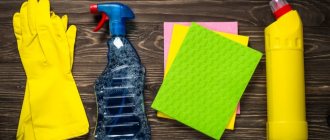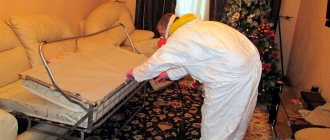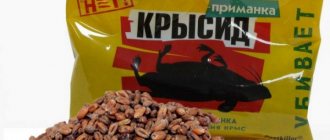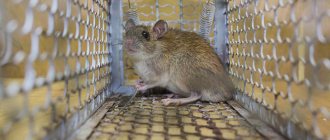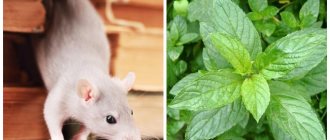Deratization is a set of measures and procedures aimed at combating the spread of rodents. The need for such work arose due to the epidemiological danger that the creatures pose. Deratization is carried out in the form of preventive measures and extermination using various methods.
There are several thousand species of rodents, which make up the majority of the planet's mammals. Due to the nature of their life activity, many species are carriers of infections or their pathogens. Rodents often live in residential premises and places of large crowds of people, which causes a strong epidemiological danger.
The most harmful species are rats and mice. These rodents live closest to humans and carry many types of dangerous diseases. They live in places such as residential buildings, warehouses and workshops, farms, industrial enterprises, underground networks, etc. Rodents also live in open areas around the house. In addition to rats and mice, voles, gray hamsters and black species of rats are dangerous, which are rarer, but no less harmful.
Rodents are carriers of the following infectious diseases dangerous to humans:
- leishmaniasis;
- encephalitis;
- worms;
- rickettsial diseases;
- fungal infections;
- Marseilles fever;
- plague.
Rodents also have a tendency to spoil food, which makes it impossible for them to continue to be consumed by humans. Pests can damage furniture, walls, books and other interior segments, which makes their presence even more harmful.
Types of deratization
The main types of deratization are:
- preventive;
- fighter.
The purpose of preventive deratization is to prevent the spread of all types of rodents indoors. The procedures will include blocking the pests' access to food and other items that they can harm.
The main type of preventive deratization is general sanitation or sanitary-hygienic. This includes generally maintaining the cleanliness of the premises, as well as eliminating possible access routes for rodents. This also includes timely cleaning and removal of garbage and waste, which is best not stored close to the building, as they strongly attract pests.
The next type of preventive deratization of premises is engineering and technical. It includes measures and procedures that must be carried out during the construction, expansion, reconstruction and repair of buildings. The purpose of sanitary prevention is also to prevent rodents from entering the premises. The types of procedures depend on the specific location and the prevalence of pests there.
During engineering and technical deratization of premises, ventilation paths are monitored. Possible access points for rodents should be closed with metal partitions. Construction must also take into account the fact that a large number of pests penetrate through basements and semi-basements. It is better to construct the walls and floors from concrete so that rodents do not have access there.
Agrotechnical prevention is the most extensive. It involves a set of operations aimed at creating a negative environment for the spread and reproduction of rodents in the area of the facility.
Extermination deratization is a set of procedures, the purpose of which is to control the number of rodents and their timely, high-quality elimination. This type of deratization work is very labor-intensive and requires special skills. Workers are searching for rodent habitats, as well as monitoring their population and movements. This is necessary for one-time and complete extermination of pests.
Methods of deratization
The choice of method for deratization of premises and territories depends on the characteristics of the area, sanitary and technical requirements and the biological characteristics of pests. There are 4 main types of exterminators: chemical, gas, mechanical and biological.
The mechanical method of deratization is the simplest and most common. It includes procedures whose purpose is to catch rodents using mechanical structures such as mice and rat traps, traps, traps, etc. The advantage of the method is that it does not pose a risk to human health and life and does not harm the environment. The technique is effectively used in small rooms. For high-quality catching, it is necessary to establish the pest population and places to install traps.
Chemical methods of extermination deratization involve the use of special reagent substances in premises. They are used to treat surfaces in possible gnawing habitats, and are also applied to baits. Rodenticides are most often used to kill pests. Their advantages are accessibility and efficiency, which allows you to destroy a threat over a large area.
The choice of chemical agent for deratization depends on the biological characteristics of the pests, as well as their population. Each type of chemical has a specific odor that attracts different groups of rodents. If selected incorrectly, pests will not feel the aroma of the product and will not taste it.
Biological extermination methods include control over natural processes in the food chain. To do this, people attract animals that, in natural conditions, hunt rodents. Cats are allowed in residential premises. In large areas and in rural areas, favorable conditions are created for the spread of predators that will hunt rodents and not interfere with the main activity.
Also, the biological method of deratization includes the use of special bacteria and microorganisms that are destructive to rodents, but do not have a negative effect on human health. They need to be added to pest baits, since the bacteria themselves do not have the ability to attract rodents. After entering the body, they quickly master and begin pathogenic activity.
The gas method of exterminating deratization is rarely used. The reason for this is the use of organophosphorus components, which have a strong toxic effect on the human body. This method is common on ships, since other methods are not applicable there.
Introduction
Deratization (French dératisation - literally “extermination of rats”) - comprehensive measures to exterminate rodents (rats, mice, voles, etc.).
The problem of deratization against mice worsens with the end of summer, when the proliferating population is looking for places to winter.
Rodents may have some charm, but when it comes to a rat infestation in a home or institution, then such a situation requires immediate and decisive action. Deratization is considered the most effective method, and you will learn about the features of this method further.
Scope of sanitary standards
Deratization of premises is carried out in accordance with SanPin 3.5.3.3223-14. The rules indicate sanitary and epidemiological standards that must be met during the planning and implementation of deratization work, the purpose of which is to prevent the appearance of gnawing animals that pose an epidemiological danger, as well as a reduction in their population or complete destruction. The rules apply to all governing bodies, individuals and legal entities. Institutions whose task is sanitary and epidemiological control monitor compliance with the rules during the organization and implementation of deratization procedures.
Requirements for organizing and conducting deratization
Preparation and execution of deratization work should be ensured by:
- self-government bodies;
- government agencies;
- citizens;
- legal entities and individuals;
- individual entrepreneurs.
State authorities and self-government bodies are involved in carrying out deratization procedures in spring and autumn in parks and forest areas. Their task is also to carry out deratization in residential structures and buildings, for the well-being of which they are responsible. The processing also affects the surrounding area.
Legal entities are engaged in researching the condition of objects for the welfare of which they are responsible, regarding the prevalence and population of rodents, as well as monitoring the sanitary and technical condition of the premises. Their task is to determine the places where pest control work is required, including the area and quantity. Also, legal entities, as well as individual entrepreneurs, must regularly carry out preventive measures, and when carrying out extermination work, monitor their effectiveness and compliance with the standards for the use of chemical and biological treatment methods.
When organizing deratization, an inspection of objects and neighboring territories is carried out, the purpose of which is to identify the presence of rodents that pose an epidemiological danger. To do this, it is necessary to establish their type, population, characteristics and routes of movement. Next, an effective method of destruction is determined, and the object’s compliance with sanitary, technical and hygienic standards is assessed.
Types of assessment of objects that require deratization:
- Subjective. Includes determining the presence of pests in the premises, studying the damage caused to the object, as well as establishing the frequency and consistency of the appearance of pests.
- Objective. For this purpose, control measures are used, in which traps, traps and bait without poison are placed indoors. They also perform clogging of burrows and passages.
The requirement for deratization is established based on the following criteria:
- the presence of a caught pest;
- establishing traces of the presence of rodents through an objective assessment;
- visible movement of pests around the premises and surrounding areas;
- traces of rodents on baits and traps.
How is deratization of territories carried out?
Rodents not only carry serious infectious diseases, posing a threat to the epidemiological situation, but also eat crops on agricultural lands, causing significant economic damage. Among these parasites are voles, moles and other types of rodents.
Signs of the presence of harmful rodents on the territory are:
- individuals caught in traps;
- eating poisoned and non-poisoned baits within 3 days of their placement;
- detection of burrows and underground passages;
- facts of damage to products and the containers in which they are located;
- identification of fresh excrement.
Deratization of territories can be carried out not only for agricultural, but also for urban lands, as part of the implementation of measures for systematic complete deratization. Usually, before the start of extermination work, a survey of the areas adjacent to residential buildings, agricultural and livestock complexes is carried out.
Methods of extermination in this case may be:
- placement of traps, at least 3 pieces per 100 m2 of area;
- pollination of rodent burrows and paths by poisons;
- laying out baits filled with poison;
- using animals such as cats to hunt rodents.
Important:
Only a specialist who understands the habits of animals can accurately determine their habitat, likely routes of movement and outline effective ways to destroy the overgrown population of rodents.
Measures to prevent the appearance of rodents
Engineering and technical measures aimed at protecting against the spread of rodents indoors:
- using only those structures that ensure constant tight closing of doors;
- installation of metal partitions in water drains and ventilation ducts;
- regular inspection and elimination of cracks, holes and possible rodent passages in the walls, floor and ceiling;
- sealing of communication passage areas;
- using pest-resistant material to cover the underside of walls and doors;
- installation of ultrasonic, electrical and mechanical repellers that are safe for human health;
- eliminate the possibility of rodents hiding in utility rooms, basements, attics and food storage areas;
- stopping special anti-rodent agents in their possible habitats and routes of movement.
Sanitary and hygienic requirements to prevent the appearance of rodents:
- carrying out regular activities, the purpose of which is to maintain the sanitary conditions of the premises and the surrounding area;
- regular cleaning of waste collection areas in residential buildings using detergents and disinfectants (at least once every 24 hours);
- covering areas where containers with garbage are stored with asphalt or concrete covering, as well as keeping it clean.
- use for the disposal and storage of food waste only those containers that provide a tight and hermetically sealed closure, as well as their timely cleaning;
- Regular removal of waste from local areas.
Agrotechnical deratization measures:
- regular activities aimed at eliminating weeds from areas;
- collection of fallen leaves in local areas;
- sanitary and technical cleaning of forested areas;
- regular felling in forest and forest-park areas.
What is deratization?
Deratization is a set of measures to exterminate rodents (mice and rats) that live in residential and public buildings.
Since most members of the mouse family belong to synanthropes, their life is connected with humans. Rodents try to stay close to people, this makes it easier for them to get food and find shelter for themselves and their future offspring. Rats and mice can be found in warehouses and industrial premises, in catering establishments and stores (especially grocery stores), and in residential buildings.
Deratization
Regular pest control in public places and apartment buildings is needed as a preventative measure, so it is mandatory. Individuals can also order a rodent extermination service by contacting the appropriate organization.
Classification
All rodent control measures can be divided into 2 categories:
- preventive;
- fighter.
Preventive measures are aimed primarily at creating conditions unsuitable for the existence of rats and mice, and thereby preventing their appearance.
Similar measures should be taken, for example, by management companies servicing apartment buildings. Their responsibilities include monitoring the condition of the local area, communications and common areas inside the houses. If prevention is carried out regularly and efficiently, then a rodent invasion will not occur, which means baiting will not be necessary.
Exterminatory deratization involves more radical actions aimed at destroying existing rodents. To combat them, poisons and traps are usually used.
Rules and regulations
All standards regarding the implementation of measures to exterminate mice and rats are set out in SP 3.5.3.3223-14. Sanitary rules establish the frequency of planned deratization depending on the purpose of the premises. The standards also affect the procedure for carrying out measures to exterminate rats, and also regulate measures to monitor the results of the treatment.
Preventive methods
Preventive deratization measures are aimed at creating unfavorable conditions for the living and breeding of rodents, as well as eliminating the possibility of their entry into premises.
Prevention is carried out in several areas:
- engineering and technical measures (installation of metal mesh on pipes and ventilation holes, sealing gaps and cracks in floors, ceilings, walls, installation of seals for hermetically closing doors, cementing areas for garbage containers);
- sanitary measures (regular cleaning of entrances and local areas, washing garbage receptacles and garbage chambers using special means, daily garbage removal);
- agro-forestry (removal of weeds, old stumps and plant debris in vacant lots, sanitary pruning of trees).
Cleaning the entrance
Comprehensive measures help to reliably protect the territory from the appearance of rodents.
Requirements for carrying out extermination deratization works
The need to carry out deratization extermination work at various objects, as well as in premises, in order to be cleared of pests early, is fresh traces and presence.
When planning pest extermination, the following factors are taken into account:
- sanitary and epidemiological situation in the area;
- compiling a list of common diseases in the area that are dangerous to humans and carried by rodents;
- biological and environmental characteristics of the pest species;
- type of natural focus;
- properties of rodenticidal substances necessary for extermination;
- category of the object in which processing is required.
During times of rapid migration activity of pests, barrier deratization is carried out at objects with a special epidemiological status. Natural areas are processed within recreational areas, as well as along the borders of adjacent objects.
Quality control and effectiveness of exterminator deratization is carried out based on rodent population indicators. Data is collected 30 days after the work is completed. In residential buildings and premises, an indicator of quality is the percentage of area that has been completely freed from the presence of pests. In open areas, the effectiveness of work is determined based on the percentage of rodent mortality.
Effective deratization is one that prevents the reappearance of rodents in areas and indoors for at least 3 months from the end of the elimination measures. This indicator takes into account compliance with sanitary, technical and epidemiological standards. In populated areas, the pest population should be within 3%.
Employees of organizations and institutions that carry out deratization operations must undergo regular medical examinations. Products used during rodent control activities must be approved for use on a specific type of facility.
The procedure for carrying out measures to exterminate rats
Let's look at how preparations are carried out for deratization at objects of social significance.
After all, the following fall under the close attention of Rospotrebnadzor and other supervisory agencies:
- food industry enterprises;
- catering places;
- warehouses;
- schools, kindergartens and universities;
- utilities;
- premises of transport companies.
Therefore, before carrying out measures to destroy parasites, these objects must first be inspected by experts from the deratization service. Only after careful monitoring of the sanitary and epidemiological condition of the premises, assessing its area, identifying the most contaminated areas, will the most effective drug be selected and a detailed system of actions and plan drawn up to eliminate dangerous pests and reduce the growth of their population.
All control agents and equipment for deratization must be accompanied by the necessary documents on sanitary testing in accordance with international standards and sanitary requirements that are valid in the territory of the Russian Federation.
Requirements for the preparation and storage of rodenticides
In institutions that carry out deratization work, specialized storage or household premises should be allocated for the preparation of baits based on rodenticides. Preparation and packaging of products in the form of baits and other forms is carried out in a special production room. It must be equipped with a powerful supply and exhaust ventilation system. It should also have plumbing systems and access to sewerage.
To cover the walls and floors in the room for preparing and packaging rodenticides, easy-to-clean components (oil paint, tiles, linoleum, etc.) are used. Also in the room there should be special work tables, the covering of which is made of plastic, galvanized sheet or stainless steel. Premises in which toxic substances are stored must comply with all necessary sanitary and technical standards. There will be a separate exit in the production room for the preparation of means and baits. The preparation and packaging of products for deratization work outside specially equipped premises is prohibited.
Storage, accounting and distribution of deratization agents is carried out in a specialized warehouse where production procedures are prohibited. It should also have a powerful supply and exhaust ventilation system installed. Its power must ensure that the room is within the limits of possible concentrations of substances in the air of the work area. The warehouse must have a water supply and sewerage system. To store special deratization agents, metal racks are installed in warehouses. Floors and walls, as well as work areas and areas, as in production areas, should be treated with a coating that is easy to wet clean.
In warehouse and production premises that are used for deratization activities, special living areas must be equipped for personnel who carry out deratization work. In such rooms it is mandatory to have wardrobes of 2 sections intended for separate personal and work clothes of workers. Also, in living areas there must be a hot shower and sanitary facilities.
In warehouses, as well as industrial and domestic areas, there must be means to provide first aid to victims of deratization substances. There should also be instructions nearby with a list of necessary measures and rules for people whose work involves storing, packaging, preparing, transporting and using deratization substances and traps. During the preparation and manufacture of pest attractants, the use of rodenticides without the appropriate license is prohibited. Workers who carry out disinfection operations must have the required level of training, and also improve their personal qualification level once every 5 years.
Disinfection
Disinfection includes work on the disinfection of premises, vehicles, equipment, furniture, dishes, food products, food residues, and technological equipment for processing raw materials and products.
Objects are disinfected by irrigation, wiping, aerosol treatment, immersion and other methods.
The choice of a disinfectant, as well as the method of its use, are determined by the characteristics of the object being disinfected and the biological properties of the microorganism, which together should ensure the achievement of disinfection.
The use of disinfectants that have only a static effect, i.e. inhibiting the growth of microorganisms.
Officials engaged in disinfection activities are required to:
- ensure the safety of the work performed and services provided during their production, transportation, storage, and sale to the public for human health;
- carry out production control, including through laboratory research and testing, over compliance with sanitary rules and the implementation of sanitary and anti-epidemic (preventive) measures;
- promptly inform the population, local government bodies, bodies and institutions of the state sanitary and epidemiological service of the Russian Federation about emergency situations, production stoppages, and violations of technological processes that pose a threat to the sanitary and epidemiological well-being of the population.
Disinfection is carried out in conditions that are safe for workers, in living conditions.
The set, area, equipment and decoration of production and household premises must comply with the requirements of sanitary rules.
Disinfectants are stored in supplier containers (packaging) with a label, under conditions regulated by regulatory documents for each product, in specially designed premises (warehouses). The container label is kept for the entire period of storage (sale) of the disinfectant.
If an organization uses disinfectants in quantities of less than five kilograms at a time, the supply of disinfectants is stored in places that prevent unauthorized use.
The warehouse provides separate storage of disinfectants (sterilizing agents), detergents, insecticides, repellents, rodenticides, and baits.
Placing places for permanent stay of personnel in the premises for storing disinfestation products is not permitted.
It is not allowed to store food, drinking water, eat food, or have unauthorized persons in the room for storing disinfestation products.
In the warehouse, natural or artificial ventilation is required, which ensures that the content of harmful substances in the air of the working area does not exceed maximum permissible concentrations (MPC).
The warehouse is equipped with metal racks for storing small containers of disinfectants and wooden shelves for storing glass bottles with disinfectants.
The finishing of the floor, walls and ceiling of the warehouse must be such that it prevents the sorption of harmful and aggressive substances and allows wet cleaning and washing (ceramic tiles, oil paint). The room temperature should be no lower than 18ºС and no higher than 20ºС. Disinfectants protect against exposure to direct sunlight.
When the first signs of poisoning of personnel with disinfectants appear, you should immediately provide assistance on the spot in accordance with first aid measures for poisoning with disinfectants and call an ambulance.
Disinfectants are distributed in a separate room. When issuing and receiving disinfectants, the storekeeper uses appropriate personal protective equipment.
Requirements for the use of control agents
During deratization operations and procedures for exterminating pests at facilities, rodenticides are used, the basis of which are anticoagulants. The work also includes physical and mechanical methods of deratization.
When performing barrier, targeted or continuous work to eliminate rodents, acute rodenticides and second generation anticoagulants are used. To increase effectiveness, they are applied together with physical methods.
The use of acute rodenticides by organizations engaged in professional deratization activities is possible only with the necessary permits, as well as sanitary, hygienic and epidemiological studies and their results. Products based on generation 1 and 2 coagulants can only be used in places where pets and children do not have access. Also, rodenticides are located away from food products and feed grains.
The locations of rodenticides should be regularly inspected during the entire period of deratization of the premises. Monitoring of the condition of the product is stopped if there are no traces of rodent action on it for more than 14 days. In such cases, the threat is considered eliminated.
It is prohibited to issue rodenticides and other similar products for carrying out deratization operations to persons who do not have professional skills and have not completed the necessary instructions and preparatory courses. In open areas, rodenticides are placed in areas where rodents are most likely to be found. In this case, it is necessary to take into account the safety of people, as well as the availability of natural shelter. The amount of funds that must be used to carry out exterminatory deratization is calculated based on the characteristics of the treatment object.
Chemical method of deratization
Deratization can be carried out through infection of rats and mice, for which rodenticides are used. They are different and can kill a rodent with a single (acute) or multiple (chronic) dose, depending on what methods of deratization are used.
Acute rodenticides include metal phosphides and alpha-chloralose. Once ingested by a rodent, the pesticide reacts with stomach acid in the digestive system, thereby forming toxic phosphide gas - aluminum, magnesium and calcium).
Features of some acute rodenticides:
- Metal phosphides are typically fumigants and are fast-acting, single-dose rodenticides;
- Norbormide is only effective against normal rats. It acts by cutting off the blood supply to vital organs by constricting blood vessels;
- Brodifacoum, flocumafen and difenacoum are all highly lethal poisons. Anticoagulants prevent blood clotting and lead to the death of rodents from internal bleeding.
Chronic rodenticides include Warfarin, Coumatetrail and Diphacinone, which are anticoagulants. These include Calciferol, a form of vitamin D used in combination with anticoagulants to improve their rodenticidal effects.
Production control in institutions carrying out deratization work
Compliance with the necessary rules and regulations in organizations and institutions that carry out disinfection work and store and prepare rodenticides is monitored by a specially trained employee. Also, such organizations must have all the necessary licenses and accompanying documentation for the products that are used in the manufacture of baits, as well as documentation that confirms the products’ compliance with quality standards. In cases of accidents and emergencies that are associated with the possibility of human poisoning with a chemical agent, as well as contamination of objects, the environment and soil, it is required to immediately report to the relevant sanitary and technical authorities.
The procedure for performing preventive and exterminatory deratization on certain types of objects
Regulatory documents consider the following types of objects for deratization work:
- Living spaces;
- food industry
- catering and food retail outlets;
- treatment and prophylactic complexes;
- water supply points.
In residential areas, rodents are most often present in basement areas and garbage collection points. House mice also live in apartments and houses.
Preventive measures involve closing all openings and possible pest passages with metal partitions. It is also necessary to keep stairwells clean and regularly remove and dispose of garbage and waste. Garbage bins in residential areas should be cleaned at least once every 24 hours and should not be filled more than 70%. Also indoors, it is effective to install ultrasonic and electrical devices to repel rodents.
During targeted and continuous extermination procedures in residential areas, rodenticide baits are placed in areas where the gnawing is likely to live. Also, rodenticide traps and baits are placed in passages and paths of possible movement of pests, under pieces of furniture, along walls and corners. Replenishment of baits is carried out as necessary. Extermination disinfection is coordinated with residents and carried out according to a specific schedule. Residents must be informed in advance about the timing of deratization operations and points of special danger.
At enterprises associated with the food industry, as well as in retail outlets and public catering establishments, systematic preventive deratization operations are carried out. They are performed in all rooms, as well as in areas adjacent to enterprises and institutions. Also, preventive measures include compliance with container storage standards and timely disposal of waste.
When carrying out exterminatory deratization operations at food industry points, special baits and traps made of plastic, paper or wood are used, as well as dense linings for rodenticides. Trap containers are used without additional linings or accessories.
To enhance the attraction of rodenticide traps, they are additionally treated with substances that attract rodents. These are starch, sunflower oil and flour. Grain traps and granular paraffin are also used. Additionally, food factories use traps with a sticky effect on pests, but without direct proximity to open products.
In institutions that process and store grain products, liquid products are used. In vegetable warehouses, preparative rodenticides are used, as well as DTO, mechanical structures and ultrasonic devices for repelling. Preparative substances are also used at food retail outlets and in public catering establishments to prevent pests from spreading the product into food products.
In treatment and prophylactic complexes, it is prohibited to contain medical waste in places where rodents can access it. Disposal of all waste must comply with all necessary rules and regulations. Preventive deratization measures in medical institutions are carried out regularly due to sanitary and epidemiological requirements. Particular attention is paid to possible rodent habitats such as basements, warehouses, equipment storage areas, catering units and adjacent areas.
Exterminator deratization to eliminate pests in treatment and prophylactic complexes is carried out using specialized products in the form of granules, as well as grain type. Additionally, products in the form of capsules, paraffin briquettes, gelatin components and dough-containing baits are used. Among the means of physical pest control, glue traps, ultrasonic repellent devices and crushers are used.
In treatment and prophylactic complexes, special precautions must be taken in the placement of traps and baits for rodents. Only those forms of rodenticides are used that prevent pests from spreading the product throughout the premises and their possible entry into food, bedding and medicines.
It is prohibited to place chemical rodent control agents in rooms where sick people and children are permanently located. They are also not distributed in restrooms, break rooms, study and play areas, and treatment rooms. In medical institutions, acute agents are not used and treatment is not carried out using the pollination method.
When carrying out preventive deratization in organizations and water supply services, treatment is carried out on all surfaces. Such objects are often inhabited by gray rats and house mice. The type and method of exterminating deratization in water supply services depends on the biological characteristics of the pests. Also, the product should not pose a danger to the main activities of the enterprise.
Details
Stages of deratization
The entire range of pest control measures can be divided into the following stages:
- prevention - aimed at creating unbearable living conditions for rodents;
- extermination - the use of traps and poisons in the fight against rodents.
Owners of private houses or management companies of high-rise buildings are obliged to monitor the condition of the objects entrusted to them, as well as the territories adjacent to them. It is easier to prevent such a disaster than to deal with the problem later. If you correctly carry out the preventive actions of the first stage, then it usually doesn’t come to the next one.
Prevention measures
To prevent the appearance of rodents in residential buildings, action is necessary to eliminate possible rat passages. Most often, this should be done by special services that identify and eliminate the problem. The difficulty here is that a person must think like a rodent. If you don’t have such experience, then you can make some mistakes. Prevention of deratization is carried out as follows:
1. Engineering measures. These include:
— the presence of doors that close tightly;
— the presence of metal gratings on ventilation and drain pipes;
— covering up holes and cracks in the subfloor, walls, floors, ceilings;
- in all rooms, thresholds, the bottom of the door, joints of walls and floors must be protected with durable material that rats cannot chew through;
— to electrically block rodents’ potential routes to food and water, a security and protective deratization system can be installed.
2. Sanitary and hygienic measures, which include:
— daily cleaning of containers and trash cans;
— washing garbage chambers in residential buildings using chemicals regularly once a day;
— paving or cementing waste sites, maintaining their cleanliness;
— cleaning of entrances and areas adjacent to houses.
3. Agroforestry, which include:
— removal of weeds in abandoned areas and wastelands;
- removing leaves from the ground;
— sanitary cutting of trees that need it.
How to get rid of rats in an apartment or private house
There are many ways to get rid of rodents. To ensure the destruction of pests, physical and chemical methods have been developed to influence them. Traps, which include mousetraps, do not always work. In addition, rats are very smart and are able to bypass the most sophisticated obstacles. Poison is also not a guarantee of successful control of the entire population, since rodents gradually develop immunity to everything. For these reasons, a set of measures is most often used.
Chemical method of deratization
Methods using chemicals are the most effective due to their diversity. Drugs that have a strong effect cause toxic poisoning in rodents, while remaining practically harmless to people and their pets. The selection of the drug should be carried out by a specialist.
REFERENCE! When carrying out deratization yourself, you must first carefully learn about the rules for working with yawls and strictly follow them.
There are three chemical methods of exterminating rodents:
1. Baits with poison.
They work by being mixed with food, such as porridge, minced meat, grain, potatoes, and so on. Deratization with water can also be carried out, but not all poisons dissolve in water.
2. Pollination.
The poison in powder form is scattered in places where rodents are most often seen (near the entrance to burrows, on trails). The poisonous substance gets onto the rat’s paws and fur, and during cleaning it penetrates into its stomach. The effects of poisons can vary, as can the timing of their exposure. There are fast-acting drugs that kill a rodent in 12-48 hours, and those that act gradually, accumulating in the body over 5-10 days.
3. Carbonation.
In this method, the holes of mice and rats are treated with poisonous gas. Rodents inhale the gas and suffocate, resulting in their death.
The disadvantage of the chemical method is the need to collect corpses. The problem here is that the rat can die in a place inaccessible to humans and will stink for a long time. Therefore, you need to find out in advance about the habitats of rodents.
Traps
According to reviews, mechanical traps are the most effective and harmless to people ways of getting rid of rodents when carrying out self-deratization. Today, new designs of traps with increased efficiency are being created. Such traps are installed near the exits of burrows and on trails. There are 3 types of such traps:
1. Traps - refer to disposable traps (mousetraps and others). The rodent removes a piece of food and at the same time the spring mechanism is triggered, killing the animal instantly. Mousetraps can be used in and around your home.
2. Glue traps - such pest control products are produced with an adhesive substance inside. The principle of its operation is that rodents get stuck and cannot get out. You can make such a trap with your own hands. The main disadvantage is that adult rats can get out of it, but small rats and mice stick well.
3. Shutter mechanisms are the most humane traps. The mouse climbs inside for a treat and the door immediately closes automatically. Accordingly, the rodent cannot crawl back out. The disadvantage of this type of trap is that the mouse or rat remains alive and must be killed independently.
REFERENCE! Although you can put a treat with the addition of fast-acting poison inside such a trap. Then you will save yourself from unnecessary hassle.
Repellers
This type of rodent control is more preventative. For example, if a warehouse, private house, or barn are possible habitats for rats or mice, installing a repellent device would not be a bad idea. Or you can use strong-smelling substances.
The most common are devices that emit ultrasonic waves. The human ear cannot hear these sounds, but it instills horror and panic in small rodents. Therefore, they prefer not to stay in such places and avoid them.
The disadvantage of this method is the effect on people and pets. Even if you follow all the rules for deratization in the house, because of this ultrasound, its inhabitants may experience headaches, depression, dizziness, and loss of strength. Animals in this case will behave restlessly.
Odorous substances are used to treat baseboards, ceilings, and cracks. Chemicals can be poured into existing holes or next to them. This method often does not work, as rodents can get used to the smell.
REFERENCE! There is also a well-known method of catching rodents with dogs or cats. Pets quickly deal with mice and rats in an apartment or house.
Safety measures during deratization operations
Every employee involved in pest control procedures must undergo safety training. It is prohibited to allow people under 18 years of age to work with rodenticidal substances, as well as those who have not been instructed in their use or those who have medical contraindications. It is important to take a break from work for 10 minutes every 40 minutes when constantly in a room with rodenticides.
All operations are carried out in special clothing, which also includes protective gloves and shoes. If there is a danger of toxic fumes, personal protection for the eyes and respiratory tract is used. While working with rodenticides, it is prohibited to drink alcohol, smoke or eat food. After completing their work shift, employees should thoroughly wash their face, hands and other exposed body parts with a cleanser and rinse their mouth. Employees also take a hot shower at the end of the day.
The procedure for removing special clothing after working with rodenticides:
- the mittens, without removing them from the hands, are washed in a soda solution and rinsed under running water;
- safety glasses and personal respiratory protection;
- shoes and basic clothing;
- head protection
Face protection is washed in a solution of soda and calcium, as well as in soapy water. Basic clothing is shaken and hung to dry and air. Personal protective equipment can only be stored in a separate section of a personal locker, which should be located in household areas. It is prohibited to store protective clothing at home and use it as personal belongings.
Neutralization of contaminated protective equipment, as well as special working tools, packaging, equipment and transport accessories is carried out only in specialized rooms that have a sufficiently powerful supply and exhaust ventilation system. Also, during neutralization, workers must use individual specialized protective equipment.
Precautionary measures aimed at preventing the spread of toxic substances during deratization operations:
- when in contact with rodents, use special gloves, tweezers and forceps;
- exercise caution to prevent workers from being bitten by pests, as well as traces of rodent activity coming into contact with human skin;
- use means to protect the respiratory tract in places where fever and other acute infectious diseases are spread that are transmitted by air and pose a danger to human health;
- Immediately apply antiseptics to the skin in direct contact with pests or traces of their activity.

